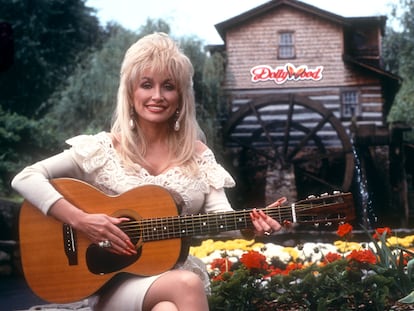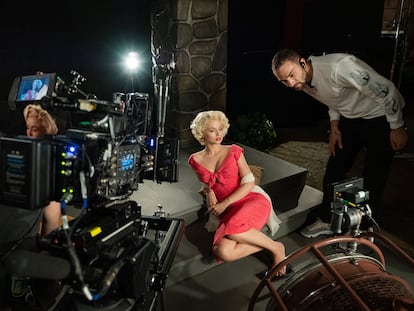How Lou Ferrigno became the Hulk: Green paint, contact lenses and two buckets of cement
‘She-Hulk,’ the Disney+ update of the Marvel legend, has been criticized for its poor visual effects. Among its detractors: is the former Mr. America who needed only basic makeup to triumph in the series over 40 years ago
Among the many critiques of She-Hulk: Attorney at Law (Disney+), the only indisputable flaw is the show’s poor Computer-Generated Imagery (CGI). When Jennifer Walters transforms into the She-Hulk, the special effects look more like Sharknado than a thriving Marvel Cinematic Universe TV series. The shortcomings were so obvious that immediately after the first images from the show were leaked, the series went back into post-production. The kindest thing that fans had to say, begrudgingly, about the special effects was that they were “somewhat green.”
People familiar with the giant’s first appearance on the screen over four decades ago followed the controversy with ironic distance. The Incredible Hulk, the series that enjoyed success around the world between 1978 and 1982, employed only three visual effects: white contact lenses, a faded wig and a can of green paint. At the time, CGI did not exist; it was five years before Tron became the first film to make significant use of computer-generated imagery in 1982. The show succeeded on the merits of the imposing muscles of Lou Ferrigno, the 6′4″, 308-pound titan who beat out Arnold Schwarzenegger for the role.
The musclebound Austrian had been the first choice to play the Hulk, but the character needed to be giant in addition to strong. Schwarzenegger had the muscles, but at 6′1″ (1.88 meters) he was not tall enough. The show chose the truly giant 7′2″ (2.2 meters) Richard Kiel, who played the Shark in the James Bond film Moonraker. Production began with Kiel portraying the titular role until the director’s son visited the set and told his father that the strange-looking Hulk did not resemble Stan Lee’s character at all.

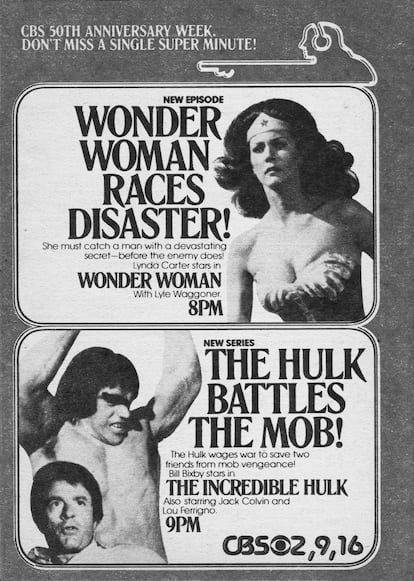
Ultimately, casting settled on Lou Ferrigno, a star bodybuilder who had won the Mr. Universe contest two years in a row. His physique was perfect, and he also had a certain innocence that fit the role well. “I went out for the screen test, and they said, ‘OK, we’re going to paint you green.’ I said, ‘What?!’... so, they compensated me for my time and painted me green...I’m standing in front of the camera…and they told me to “be like the Hulk,” so I was the Hulk… and they hired me that day! The next day, I was in makeup for, like, 12 to 14 hours, and I looked in the mirror at myself and thought, ‘What am I doing here?’ I saw the white eyes and green teeth. The rest is history,” the actor, who will turn 71 in November, recalled in an interview with the comic book website 13th Dimension.
The Incredible Hulk marked Ferrigno’s debut as an actor, although he was no stranger to the cameras. He had already starred alongside Schwarzenegger in Pumping Iron, the iconic bodybuilding documentary that chronicled the days leading up to the 1975 Mr. Olympia contest in which they both competed. Schwarzenegger had won the contest five times and would prevail once more. Ferrigno’s resume was far inferior, but his own life story was worthy of becoming his best film.
A broomstick and two cement buckets
Born in Brooklyn to a strict police lieutenant of Italian descent, Ferrigno suffered a severe ear infection as a baby and lost 80% of his hearing. That partial deafness caused him problems speaking, and he endured mockery and insults from the rest of the children in the neighborhood as a result. To overcome the bullying, he took refuge in comic books, including the Hulk. “I was obsessed with power. I wanted to be strong enough so that I could be able to defend myself,” he told People magazine in 2021.
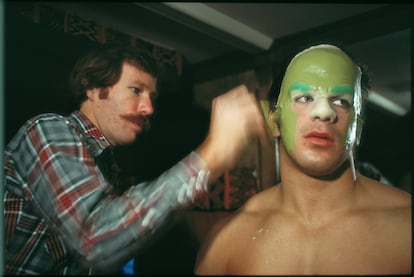
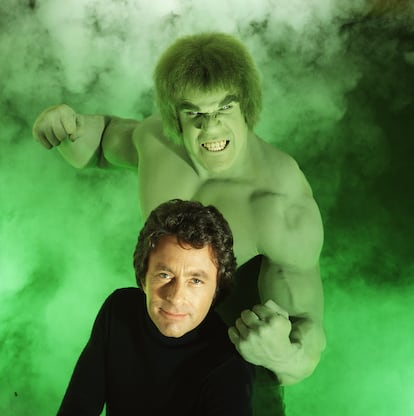
Growing up, Ferrigno didn’t have enough money to go to the gym or buy sports equipment. He used a broomstick and two cement buckets to lift weights and found his way in the world. “It changed my life. It gave me drive and determination,” he said. “I knew that this was my journey to be successful because if I hadn’t discovered bodybuilding, I would have gone the other way, feeling sorry for myself and maybe resorting to drugs.” Encouraged by his father, he tried his hand at football with disastrous results. “I played defensive tackle, and one guy came running towards me. I didn’t want to get knocked down, so I gave a full force, a 100 percent hit, and I broke both of his legs.”
On the set of The Incredible Hulk, Ferrigno never hid his hearing loss. It would have been impossible to try; from an early age, he had to wear a bulky hearing aid. “I knew I had to pay special attention because I had to read lips constantly. Sometimes, on set, the hearing aid didn’t work properly, and I’d end up wearing two instead of one.” At 68, he got a cochlear implant and was finally able to hear clearly for the first time.
The Incredible Hulk catapulted Ferrigno to great fame. The series was Marvel’s first serious attempt at filming a project based on the comics. The result was quite successful, although the liberties that director Kenneth Johnson, the creator of the successful show V, took would have led to a firestorm of online complaints from the character’s fans if social media had existed back then.
Johnson, who saw the character as similar to Jean Valjean from Les Miserables, transformed the nuclear scientist into a widower who is devastated by his failure to prevent his wife’s death in a car accident and becomes obsessed with inner strength. During one of his experiments, he’s overexposed to gamma rays, which causes him to turn into a green giant in frightening or stressful situations. In addition to modifying the experiment that gave rise to the Hulk, all of the original comic’s secondary characters were eliminated, and David Banner – whose original name was Bruce Banner but changed because, as both the creator Stan Lee and Ferrigno confirmed, Johnson found the name “too gay” – traveled from city to city to escape a tenacious journalist. Johnson also tried to make the character red, a color he considered to be more indicative of anger, instead of green, but Marvel stopped him from doing so.
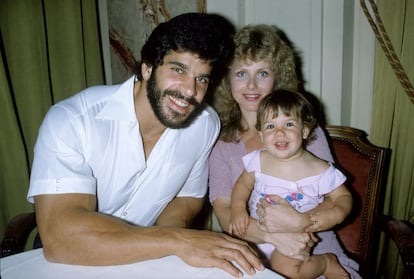
Because it wasn’t possible to develop convincing special effects, the producers opted to have one actor play each side of the character: the taciturn Dr. Banner was played by Bill Bixby, a prestigious actor who had appeared in TV shows such as Rich Man, Poor Man (1976), and Ferrigno portrayed the Hulk. To avoid disappointing fans and preserve the charm of the transformation, the two never posed together. Each episode’s highlight and most anticipated moment occurred when the Hulk’s shirt was torn at the seams. But the show wore on Ferrigno. “It took about three-and-a-half to four hours to put on [the makeup] because back then, we didn’t have the spray-on method. They had a ball of clay that they would run on. The face took about an hour-and-a-half. I would be the first one on the set... Sometimes I’d leave the set at 2 am, because I’d be filming 12–14 hours a day and then have to endure pain because I would have to be re-touched during the day. It was extremely uncomfortable.”
The series became a runaway hit and stayed on the air for five seasons. After that, the saga continued in three movies. There could have been more, but Bixby died of prostate cancer in 1993 after years of family tragedies (his six-year-old son died of an infection and a year later his ex-wife, unable to cope, committed suicide). Ferrigno’s family life has been happier: after a brief marriage that, according to the actor, failed because of the show’s schedule (“I was filming for 80 hours a week and the rest of the time I used for training, eating and sleeping”), he met Carla Green, a psychotherapist and former Playboy bunny, in 1979. The couple have three children and are still married today.
Ferrigno treasures some good memories from his time as the Incredible Hulk. For instance, one day a gray-haired guy in glasses came into his trailer to ask for his autograph, and it turned out to be Cary Grant. But other parts of the show, especially the time he spent in the makeup chair, were the stuff of nightmares. He wore contact lenses that were so painful that he could only keep them in for 15 minutes at a time, and Ferrigno’s toenails remained green for six months after the production ended.
After the Hulk, Ferrigno played Hercules in a couple of 1980s remakes. However, his acting abilities were very limited, and the reviews were brutal.
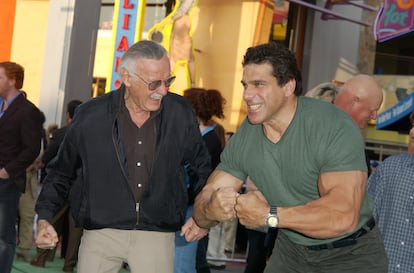
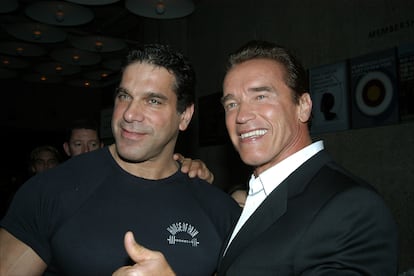
Although he never regained the immense popularity he enjoyed as the Hulk, Ferrigno has continued to appear in small roles in TV series such as The King of Queens, in which he appeared as a regular character. He has also remained connected to the Marvel universe, making cameos in the other Hulk films starring Eric Bana (Hulk, 2003) and Edward Norton (The Incredible Hulk, 2008). Besides himself, Ferrigno says Norton is his favorite Hulk. Ferrigno voiced the Hulk in all the movies (until Avengers: Age of Ultron) as well as in the animated series and video games. That’s a strange irony, because the series did not use Ferrigno’s voice; actor Charles Napier provided it. He has a love-hate relationship with Marvel and science fiction sagas in general. Ferrigno believes that today’s use of CGI is overkill: “I think we have to get retrained from seeing too much special effects because the more authentic, organic the character can be, the more believable.”
Beyond his film career, Ferrigno owns a lucrative bodybuilding product company and advises celebrities. He was Michael Jackson’s personal trainer when the singer died; he had been preparing Jackson for his upcoming concerts in London.
In 2006, Ferrigno fulfilled a dream that had nothing to do with celebrity: he was sworn in as a deputy sheriff in Los Angeles. “My father was a police officer with the New York Police Department; I’ve always had a high respect for officers,” he stated. “I want to give back to the community, and I want to work with young kids, help them get off drugs.” His support for former Maricopa Sheriff Joe Arpaio was more controversial. He and actor Steven Seagal joined the anti-illegal immigration patrols that the polarizing sheriff organized in Arizona and was part of a group of volunteers who helped the police by transporting people they apprehended at the border to jail.
Like Arnold Schwarzenegger, his rival during his golden years as a bodybuilder, Ferrigno is a staunch Republican. He wholeheartedly supported Donald Trump’s presidency, and Trump appointed Ferrigno to the President’s Sports and Nutrition Council, which serves to help Americans lead healthier lifestyles. Ferrigno can lead by example: at nearly 71, he retains an enviable physique, which he boasts about on Instagram and Twitter. His muscles still don’t require CGI.
Tu suscripción se está usando en otro dispositivo
¿Quieres añadir otro usuario a tu suscripción?
Si continúas leyendo en este dispositivo, no se podrá leer en el otro.
FlechaTu suscripción se está usando en otro dispositivo y solo puedes acceder a EL PAÍS desde un dispositivo a la vez.
Si quieres compartir tu cuenta, cambia tu suscripción a la modalidad Premium, así podrás añadir otro usuario. Cada uno accederá con su propia cuenta de email, lo que os permitirá personalizar vuestra experiencia en EL PAÍS.
¿Tienes una suscripción de empresa? Accede aquí para contratar más cuentas.
En el caso de no saber quién está usando tu cuenta, te recomendamos cambiar tu contraseña aquí.
Si decides continuar compartiendo tu cuenta, este mensaje se mostrará en tu dispositivo y en el de la otra persona que está usando tu cuenta de forma indefinida, afectando a tu experiencia de lectura. Puedes consultar aquí los términos y condiciones de la suscripción digital.
More information
Archived In
Últimas noticias
Welcome to the post-religion era: The idea of Christianity as the absolute truth has become obsolete
‘I thought you would like it’: The risky sexual practice popularized by TV shows and TikTok
The digitalization of tourism: ‘They promise experiences and gave us the worst possible one’
Mexican peso defies uncertainty with forecasts of a new period of stability in 2026
Most viewed
- Sinaloa Cartel war is taking its toll on Los Chapitos
- Reinhard Genzel, Nobel laureate in physics: ‘One-minute videos will never give you the truth’
- Oona Chaplin: ‘I told James Cameron that I was living in a treehouse and starting a permaculture project with a friend’
- Why the price of coffee has skyrocketed: from Brazilian plantations to specialty coffee houses
- Silver prices are going crazy: This is what’s fueling the rally


